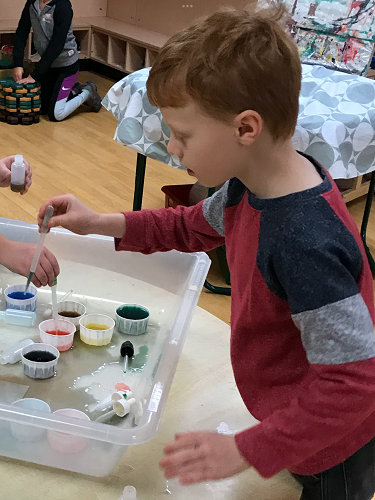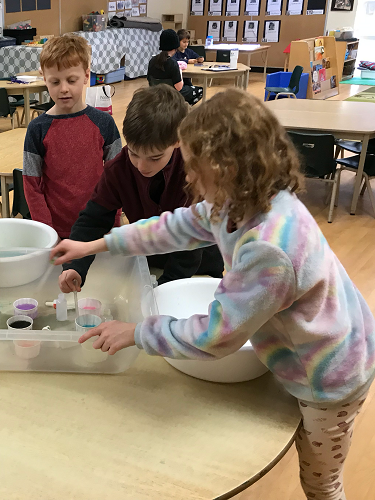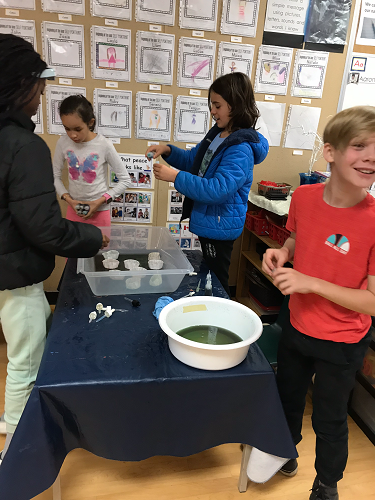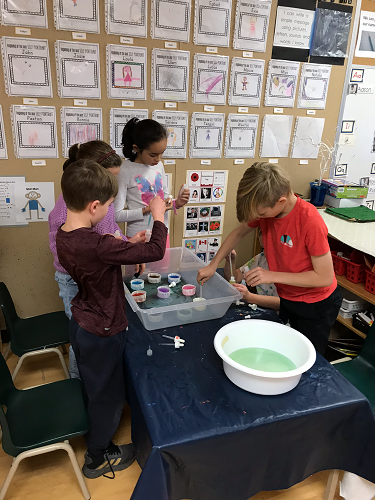In October we introduced the idea of potion making by providing colourful cups of water, droppers, and pumpkins to use as cauldrons. This was such a popular activity that gathered much interest from the children that we decided to do it again in November using bottles and bowls as a way of extending the play. As a provocation, 9 cups of coloured water were placed inside the sensory bin, and 2 empty bowls were added outside of the bin. 12 droppers and 12 bottles were then scattered around the materials, inviting the children to come and explore the activity.
Kylah, Aaron, and Oliver were among the first to join the table. They excitedly started gathering coloured water into the droppers and experimenting with mixing the colours in bottles. The coloured water was unique because it was dye extracted from dried-up markers by being put into bottles of water; this meant the colours were different shades and the children were able to make multiple unique colours through mixing. In fact, creating the “best colour” became a competition later on in the day as the children each tried to make a colour that was better than their peers.
Valentina discovered that the bottles and eyedroppers fit perfectly together to make potion bottles. This then prompted the children to start mixing different colours into the bottles and lay them out on the table in the form of a rainbow. Each bottle held a different colour and was sealed with the dropper. Once they were complete with this, they then used the bowls as cauldrons and started blending all of the colours together.
This activity was so popular among the group that they engaged in it all throughout the day, with different peers joining in at various times. As colours grew low, they’d ask for a refill, specifying which colours were needed. They discovered they could simply empty their cauldrons when they were no longer satisfied with the colour they created, and refill it with new colours. They even explored adding plain water to the bowls and observed what happened when drops of coloured water were added to it. This meant the activity was endless and continuous.
Exploring colour mixing is relatable to science and chemistry, despite the fact that the coloured watcher was a single substance. Perhaps next time we could add different substances, and even add natural loose parts and soap to our potion station to further enhance our exploratory play! I would what sort of creations would come from that?




